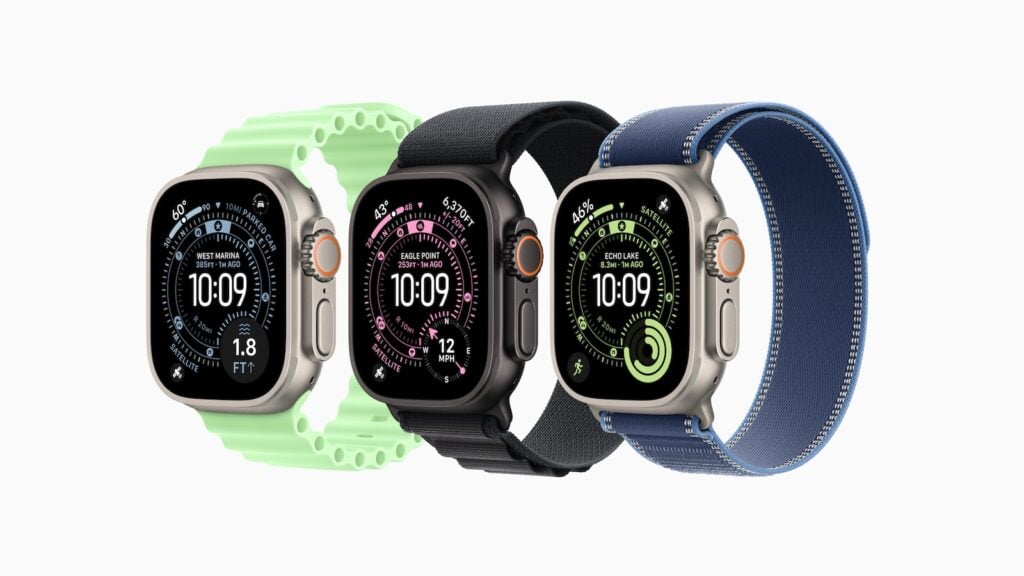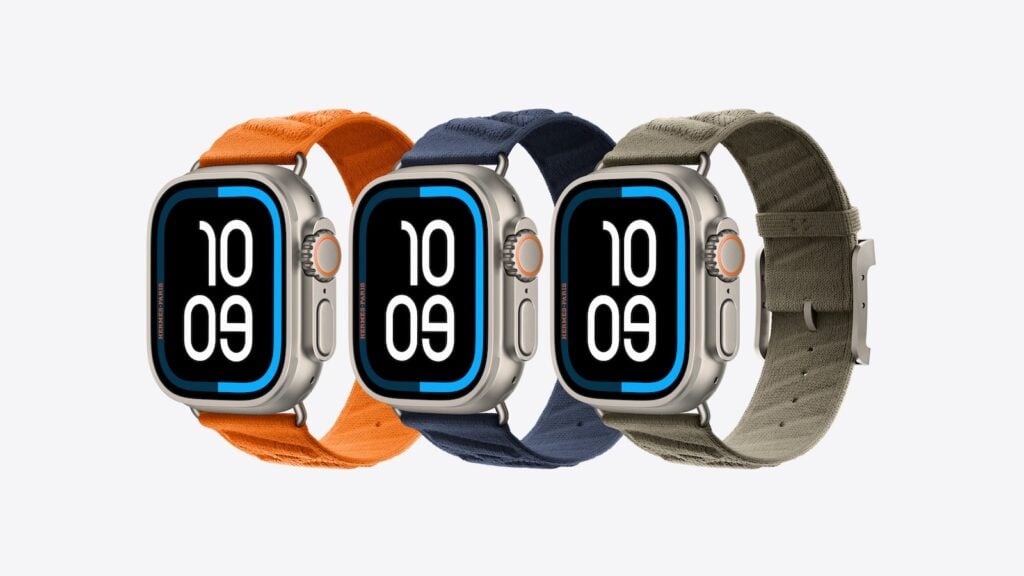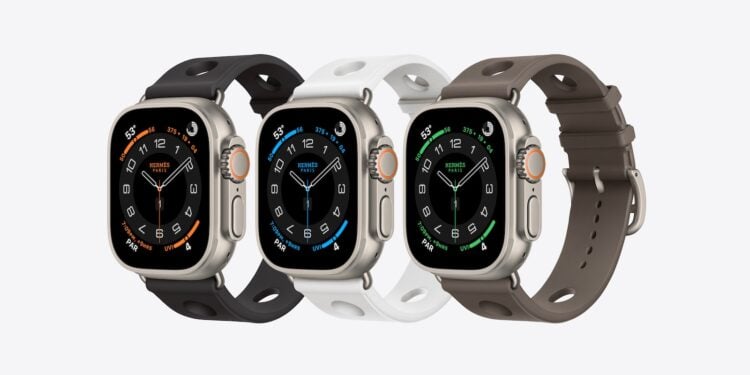With the Apple Watch Ultra 3, Apple will take the next step in the development of its most robust smartwatch series in September 2025. While barely changed visually, the new model nevertheless features several technical upgrades that could be crucial for certain user groups. In a direct comparison to the Apple Watch Ultra 2, the differences are primarily evident in the display, battery life, and connectivity.
Since its launch, the Apple Watch Ultra has been aimed at people seeking a particularly durable, powerful, and functional wearable. These include outdoor athletes, frequent travelers, and users with specific requirements for robustness and battery life. After the 2024 model only offered a new color option, a true update follows in 2025 with the Apple Watch Ultra 3. The basic design remains the same, but Apple is focusing on specific technical improvements that are relevant depending on the application.
Housing, materials and weight
The case design remains virtually identical for the new model. Titanium is still used – but now for the first time, using a 3D printing process that, according to Apple, requires significantly less raw material. The dimensions remain the same: 49 mm x 44 mm x 12 mm. The front and back are made of ceramic and sapphire crystal. The weight differs minimally. The Ultra 2 weighs 61.4 grams (natural) and 61.8 grams (black), while the Ultra 3 weighs 61.6 grams (natural) and 61.8 grams (black). This means there's no noticeable difference in practice. Protection standards also remain the same: water resistance to 100 meters, IP6X dust protection, and MIL-STD 810H certification.
Display and screen technology
Things get significantly more interesting with the display. While the case size remains at 49 mm, Apple has enlarged the actual display. The Ultra 2 offers 1,185 mm² of display space with a resolution of 410 × 502 pixels. The Ultra 3's display area grows to 1,245 mm² with 422 × 514 pixels—the largest display in the Apple Watch lineup to date. This is achieved through thinner display bezels and the new LTPO3 OLED technology. This brings greater energy efficiency and an improved always-on mode. The viewing angle is also wider. This makes content easier to see, even from the side—a detail that is especially noticeable in everyday life.

Processor and internal technology
Inside, the Apple Watch Ultra 3 is the new S10 SiP. It replaces the S9 chip in the Ultra 2. In terms of performance, the difference isn't immediately noticeable, as a smartwatch is less about processing power than energy efficiency and enhanced features. The S10 takes up less space, which improves the internal structure and creates room for optimization. Both models feature 64 GB of storage and a second-generation W3 chip with ultra-wideband.
Sensors and health functions
There are no differences between the Ultra 2 and Ultra 3 in terms of sensors. Both smartwatches feature:
- Third-generation optical heart sensor
- Electrical heart sensor for ECG
- temperature sensor
- Altimeter, depth gauge, water temperature sensor
- Compass, gyroscope, accelerometer
- Ambient light sensor
- Fall detection and accident detection
- Three wind-canceling microphones
- Two speakers
The health features remain extensive. watchOS 26 brings new features such as Sleep Score, high blood pressure alerts, and Workout Buddy, an intelligent training assistant. These software features are also available on the Ultra 2, as they are part of the operating system.
Battery life and charging behavior
The battery life is clearly improving. The Apple Watch Ultra 2 offers a runtime of up to 36 hours in normal use, and up to 72 hours in power saving mode. The Ultra 3 increases the regular runtime to 42 hours. It also maintains the same runtime in power saving mode, maintaining up to 72 hours. Apple has also improved fast charging. While the Ultra 2 charges to 80 mAh in about an hour, the Ultra 3 reaches this value in just 45 minutes. The new short-term charging feature is particularly useful for certain use cases:
- 5 minutes of charging = 8 hours of sleep tracking
- 15 minutes charging = 12 hours of use
Connectivity and emergency functions
There are also innovations in the connection to the outside world. Both models support GPS, GLONASS, Galileo, QZSS, and BeiDou, as well as Wi-Fi 4 and Bluetooth 5.3. The Ultra 2 uses LTE and UMTS for cellular connectivity. The Ultra 3 features 5G for the first time – albeit without mmWave. Even more relevant, however, is the new Emergency SOS via Satellite feature. It enables emergency calls via satellite when no cellular or Wi-Fi network is available. With this, Apple is significantly expanding the security aspect of the Watch series, especially for users who regularly move outside of urban network coverage. Familiar features such as the integrated siren and flashlight remain.

Price and availability
Both models start at €899 and are available in natural and black. The Apple Watch Ultra 3 is currently available from Apple and other retailers like Amazon. The Ultra 2 is sometimes offered at a lower price, especially during clearance sales.
Apple Watch Ultra 3 or Apple Watch Ultra 2: Which is the better choice?
The Apple Watch Ultra 3 brings useful, but not revolutionary, innovations. The larger screen, more efficient display, longer battery life, and the new Satellite SOS offer real added value—especially for users with high demands on reliability and outdoor capability. At the same time, the Apple Watch Ultra 2 remains a strong model, and with the update to watchOS 26, it also receives many of the new features. Those seeking maximum features and the latest technology should opt for the Ultra 3. Those who don't need the latest technology will still find the Ultra 2 a very powerful smartwatch. The best products for you: Our Amazon Storefront offers a wide selection of accessories, including accessories for HomeKit. (Image: Apple)
- iPhone 17: Why this model is so convincing
- iPhone Air or iPhone 17 Pro? All the differences compared
- iPhone 17 vs. iPhone 16: All the differences in detail
- iPhone 17 Pro vs. iPhone 17 Pro Max: Differences at a glance
- iPhone Air: Seven facts about the new ultra-thin smartphone
- AirPods Pro 3: Apple's headphones with 8 exciting upgrades
- AirPods Pro 3 vs. AirPods Pro 2: The big comparison in detail
- Is the iPhone 17 Pro not worth it? The iPhone 18 Pro in focus
- Apple Watch Ultra 3 vs. Ultra 2, Series 11: Battery comparison
- iPhone 17 Pro: Everything about the new camera platform & more
Apple Watch Ultra – What you should know before buying
The Apple Watch Ultra 3 has a larger display, longer battery life, a more efficient LTPO3 OLED display, and offers SOS emergency calling via satellite. The case design remains virtually the same.
No, both models use a 49 mm titanium case. However, the Ultra 3's case is the first to be manufactured using 3D printing, which saves material.
Yes, the Apple Watch Ultra 3 has a larger display with higher resolution and better viewing angles thanks to LTPO3 technology and thinner bezels.
The battery life is up to 42 hours in normal mode and up to 72 hours in power saving mode – 6 hours more than the Ultra 2.
Yes, the Ultra 3 can send emergency calls via satellite when there is no cellular service available—a new feature missing from the Ultra 2.
Both models have similar performance. The new S10 chip in the Ultra 3 is more compact, making the design more efficient, but doesn't provide a noticeable performance boost.
No, both models have the same sensors. New features like sleep score and blood pressure alerts are part of watchOS 26 and are also available on the Ultra 2.
Yes, the Ultra 3 charges to 80 mAh in just 45 minutes, while the Ultra 2 takes about an hour. Short-term charging has also been improved.
For users who value longer battery life, a better display, and additional security features, the upgrade is worthwhile. For others, the Ultra 2 is sufficient.
Both models start at €899 (or $799). The Ultra 2 is currently mostly cheaper because it's on sale.





